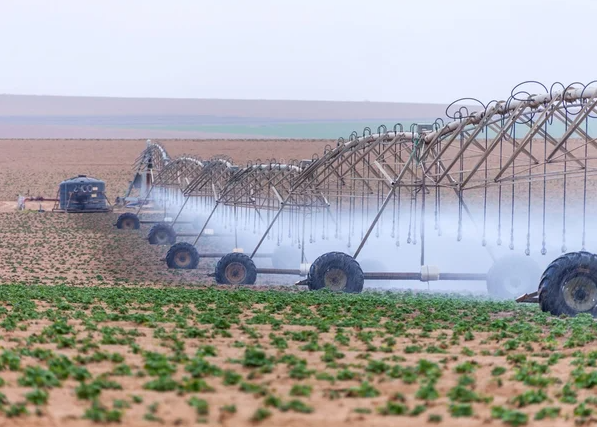Water is a vital resource that is essential for the survival of all living organisms on earth. It is also a limited resource, with demand often exceeding supply in many parts of the world. In this article, we will explore the state’s water resources and the challenges that it faces in managing and conserving these resources.
The state’s water resources:
The state is home to a wide variety of water resources, including rivers, lakes, reservoirs, aquifers, and streams. These resources provide the state with a reliable source of water for drinking, irrigation, and industrial purposes.
The state’s water resources are managed by a variety of government agencies, including the Department of Water Resources and the State Water Resources Control Board. These agencies work to ensure that the state’s water resources are used efficiently and sustainably and that they are protected from pollution and overuse.
Challenges in managing and conserving water resources:
Despite the abundance of water resources in the state, there are several challenges that the state faces in managing and conserving these resources. Some of the key challenges include:
- Drought: Drought is a common occurrence in the state, with prolonged periods of dry weather leading to a shortage of water. This can be particularly challenging for farmers and ranchers, who rely on water for irrigation, and for urban areas, where demand for water is often high.
- Overuse: The state’s population has grown significantly in recent years, leading to an increase in demand for water. This has put pressure on the state’s water resources, with some areas experiencing overuse of these resources.
- Pollution: Water pollution is a major concern in the state, with industrial and agricultural activities often contaminating the state’s water resources. This can have serious consequences for human health and the environment.
- Climate change: Climate change is also a major challenge for the state’s water resources, with rising temperatures leading to increased evaporation and reduced snowpack. This can lead to more frequent droughts and a decline in the state’s water supply.
- The state’s water resources are vital for the state’s economy and the well-being of its residents. However, managing and conserving these resources is a complex and ongoing challenge. To address these challenges, the state must work to improve water efficiency, reduce water pollution, and adapt to the impacts of climate change. By doing so, it can ensure that the state’s water resources are protected and used sustainably for generations to come.
The importance of water resources in the state:
Water is essential for the survival of all living organisms and plays a vital role in the state’s economy. It is used for drinking, irrigation, and industrial purposes, and is an important resource for farmers, ranchers, and urban areas. The state’s water resources are also important for recreation and tourism, with many people visiting the state to enjoy its lakes, rivers, and streams.
Strategies for managing and conserving water resources:
To ensure that the state’s water resources are used efficiently and sustainably, there are several strategies that the state can implement. Some of these strategies include:
1. Water conservation:
The state can encourage residents and businesses to use water more efficiently by promoting water-saving practices and technologies. This could include installing low-flow toilets and showerheads, using drought-resistant plants in landscaping, and using drip irrigation systems for agriculture.
2. Water recycling and reuse:
The state can also invest in water recycling and reuse projects, which can help to reduce the demand for fresh water. This could include treating and reusing wastewater for irrigation and industrial purposes, or capturing and storing rainwater for later use.
3. Protecting water quality:
To ensure that the state’s water resources are protected from pollution, the state can implement regulations to prevent industries and agricultural operations from contaminating these resources. It can also invest in treatment and cleanup efforts to remove pollutants from the state’s water resources.
4. Adapting to climate change:
The state can also take steps to adapt to the impacts of climate change on its water resources. This could include investing in infrastructure to capture and store water during wet periods or implementing drought-resistant irrigation practices.
FAQs:
1. What are the main sources of water in the state?
The main sources of water in the state are rivers, lakes, reservoirs, aquifers, and streams. These sources provide the state with a reliable source of water for drinking, irrigation, and industrial purposes.
2. What are some of the challenges facing the state’s water resources?
Some of the challenges facing the state’s water resources include drought, overuse, pollution, and climate change. These challenges can lead to a shortage of water, a decline in water quality, and environmental degradation.
3. What strategies can be used to manage and conserve water resources in the state?
There are several strategies that can be used to manage and conserve water resources in the state, including water conservation, water recycling, and reuse, protecting water quality, and adapting to climate change. By implementing these strategies, the state can ensure that its water resources are used efficiently and sustainably.
Conclusion:
The state’s water resources are vital for the state’s economy and the well-being of its residents. However, managing and conserving these resources is a complex and ongoing challenge. To address these challenges, the state must work to improve water efficiency, reduce water pollution, and adapt to the impacts of climate change. By doing so, it can ensure that the state’s water resources are protected and used sustainably for generations to come.


